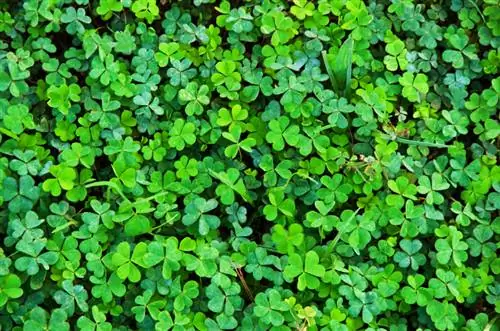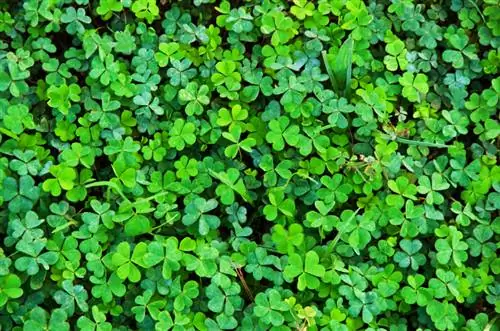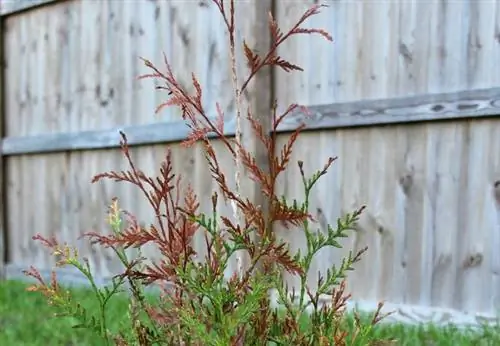- Author admin [email protected].
- Public 2023-12-16 16:46.
- Last modified 2025-01-23 11:20.
Some gardeners get goosebumps, shudder or become furious when they hear the word wood sorrel. This plant has driven many a gardener to the brink of despair. It is known as a difficult weed to kill.

Why is wood sorrel a nuisance weed?
Sorrel is considered a weed because it reproduces quickly, is difficult to remove and crowds out other plants. It has clover-like leaves, flowers in white, pink or yellow and likes to grow in shady locations. Nevertheless, it is edible and has healing properties.
Why is wood sorrel considered a weed?
Sorrel, which comes from the sorrel plant family, is extremely stubborn, willing to survive and reproduce. Once it has settled and liked its location, it is difficult to remove again.
The horn sorrel in particular is known for its resistance and is hated by many gardeners. Although it is only an annual, it survives in the ground with the help of root runners. In addition, it spreads widely with its seeds (a sophisticated spinning mechanism), which are easy to germinate.
Other reasons why sorrel is low on the popularity scale is that it is poisonous and can be dangerous for grazing animals such as sheep and goats. In addition, it displaces the otherwise competitive grass without asking.
How to recognize weeds
The wood sorrel can be easily distinguished from other plants and can be identified using the following characteristics:
- dark green, clover-like leaves
- white, pink or yellow (horn sorrel) flowers
- Flowering period from April to May, June to October (horn sorrel)
- tuber-like fruits
- low growth (5 to 15 cm high)
- sour taste of the leaves
- likes to grow in shady locations
A weed that tastes good
Aside from being a nuisance, this weed is edible. It tastes sour and fruity and has a refreshing effect. So if you tear out the sorrel, you can then eat it with pleasure, for example in a salad dressing or in a soup.
A weed that helps to be he althy
But sorrel is not just edible. The highlight: It is even he althy and extremely healing! Among other things, it has antipyretic, anti-inflammatory, appetite-stimulating, slightly laxative, blood-purifying and diuretic effects. With this spectrum of activity it can be used for:
- Rheumatism
- Liver disease
- Gallstones
- Lose appetite
- flu infections
- Kidney problems
- Heartburn
- worms
Tip
This weed cannot be successfully destroyed, usually only through vigorous weeding or herbicides. The control procedures are usually necessary for several years until the herb is completely eradicated from its location.






